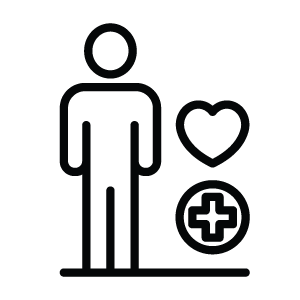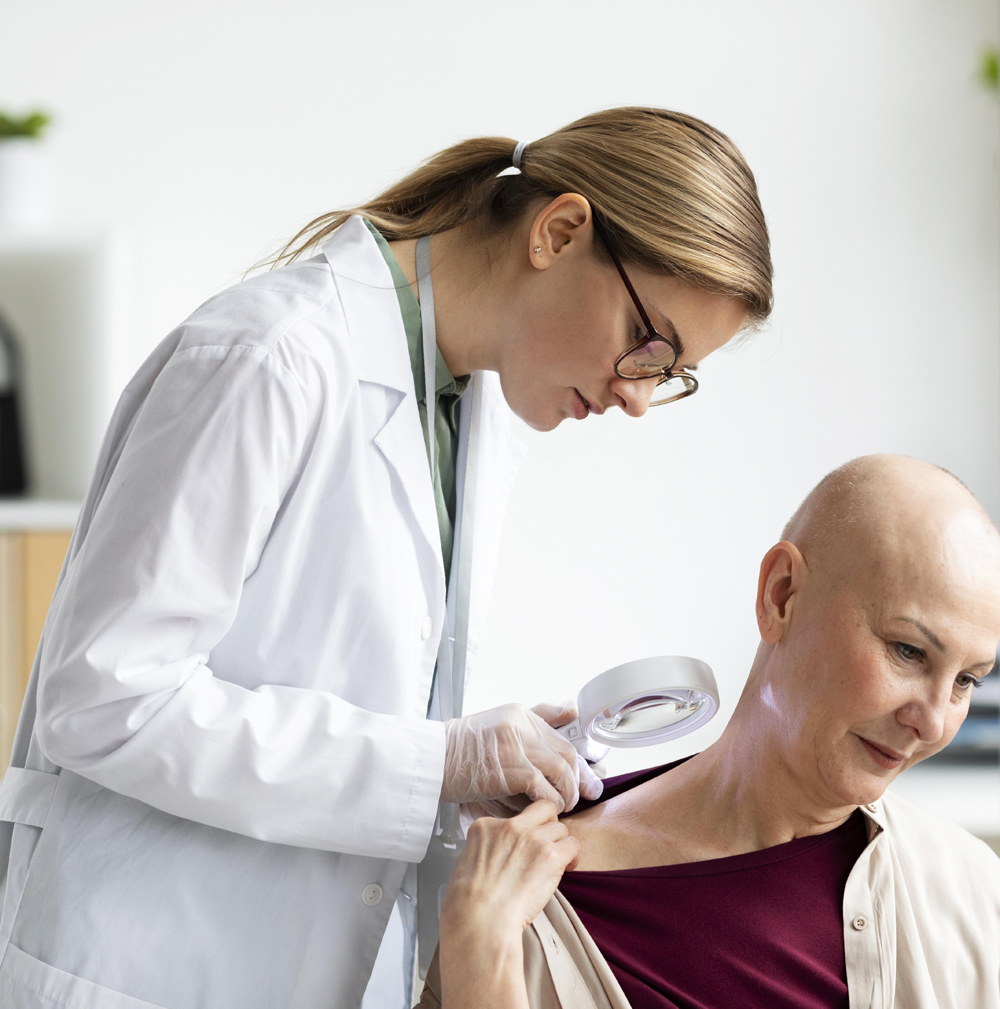Chemotherapy Treatment
Chemotherapy is a drug treatment that uses powerful chemicals to kill fast-growing cells in your body. Chemotherapy is most often used to treat cancer, since cancer cells grow and multiply much more quickly than most cells in the body. Many different chemotherapy drugs are available. Chemotherapy drugs can be used alone or in combination to treat a wide variety of cancers.
Why it’s done
Chemotherapy is used to kill cancer cells in people with cancer.
There are a variety of settings in which chemotherapy may be used in people with cancer:
- To cure the cancer without other treatments. Chemotherapy can be used as the primary or sole treatment for cancer.
- After other treatments, to kill hidden cancer cells. Chemotherapy can be used after other treatments, such as surgery, to kill any cancer cells that might remain in the body. Doctors call this adjuvant therapy.
- To prepare you for other treatments. Chemotherapy can be used to shrink a tumor so that other treatments, such as radiation and surgery, are possible. Doctors call this neoadjuvant therapy.
- To ease signs and symptoms. Chemotherapy may help relieve signs and symptoms of cancer by killing some of the cancer cells. Doctors call this palliative chemotherapy.
Chemotherapy for conditions other than cancer
Some chemotherapy drugs have proved useful in treating other conditions, such as:
- Bone marrow diseases. Diseases that affect the bone marrow and blood cells may be treated with a bone marrow transplant, also known as a stem cell transplant. Chemotherapy is often used to prepare for a bone marrow transplant.
- Immune system disorders. Lower doses of chemotherapy drugs can help control an overactive immune system in certain diseases, such as lupus and rheumatoid arthritis.
Side effects that occur during chemotherapy treatment
Common side effects of chemotherapy drugs include:
- Nausea
- Vomiting
- Diarrhea
- Hair loss
- Loss of appetite
- Fatigue
- Fever
- Mouth sores
- Pain
- Constipation
- Easy bruising
- Bleeding
Many of these side effects can be prevented or treated. Most side effects subside after treatment ends.
Long-lasting and late-developing side effects
Chemotherapy drugs can also cause side effects that don’t become evident until months or years after treatment. Late side effects vary depending on the chemotherapy drug but can include:
- Damage to lung tissue
- Heart problems
- Infertility
- Kidney problems
- Nerve damage (peripheral neuropathy)
- Risk of a second cancer
Ask your doctor if you have a risk of any late side effects. Ask what signs and symptoms you should be aware of that may signal a problem.
Determining which chemotherapy drugs you’ll receive
Your doctor chooses which chemotherapy drugs you’ll receive based on several factors, including:
- Type of cancer
- Stage of cancer
- Overall health
- Previous cancer treatments
- Your goals and preferences
Discuss your treatment options with your doctor. Together you can decide what’s right for you.
How chemotherapy drugs are given
Chemotherapy drugs can be given in different ways, including:
- Chemotherapy infusions. Chemotherapy is most often given as an infusion into a vein (intravenously). The drugs can be given by inserting a tube with a needle into a vein in your arm or into a device in a vein in your chest.
- Chemotherapy pills. Some chemotherapy drugs can be taken in pill or capsule form.
- Chemotherapy shots. Chemotherapy drugs can be injected with a needle, just as you would receive a shot.
- Chemotherapy creams. Creams or gels containing chemotherapy drugs can be applied to the skin to treat certain types of skin cancer.
- Chemotherapy drugs used to treat one area of the body. Chemotherapy drugs can be given directly to one area of the body. For instance, chemotherapy drugs can be given directly in the abdomen (intraperitoneal chemotherapy), chest cavity (intrapleural chemotherapy) or central nervous system (intrathecal chemotherapy). Chemotherapy can also be given through the urethra into the bladder (intravesical chemotherapy).
- Chemotherapy given directly to the cancer. Chemotherapy can be given directly to the cancer or, after surgery, where the cancer once was. As an example, thin disk-shaped wafers containing chemotherapy drugs can be placed near a tumor during surgery. The wafers break down over time, releasing chemotherapy drugs. Chemotherapy drugs may also be injected into a vein or artery that directly feeds a tumor.
How often you receive chemotherapy treatments
Your doctor determines how often you’ll receive chemotherapy treatments based on what drugs you’ll receive, the characteristics of your cancer and how well your body recovers after each treatment. Chemotherapy treatment schedules vary. Chemotherapy treatment can be continuous, or it may alternate between periods of treatment and periods of rest to let you recover.
Our Services
Our all-encompassing health care services ensure you receive the correct diagnosis and treatment for any oncological condition.

Biopsy Services
Diagnostic Testing

Dietary Coaching

Infusion Services

Prevention and Screenings

Radiation Therapy and Technology

Research and Clinical Trials

Support Services

Testimonials
Your Health Starts Here
Flexible appointments
We are happy to serve you.
Same Day Appointments are Available. We also offer 24/7 chronic care management.

